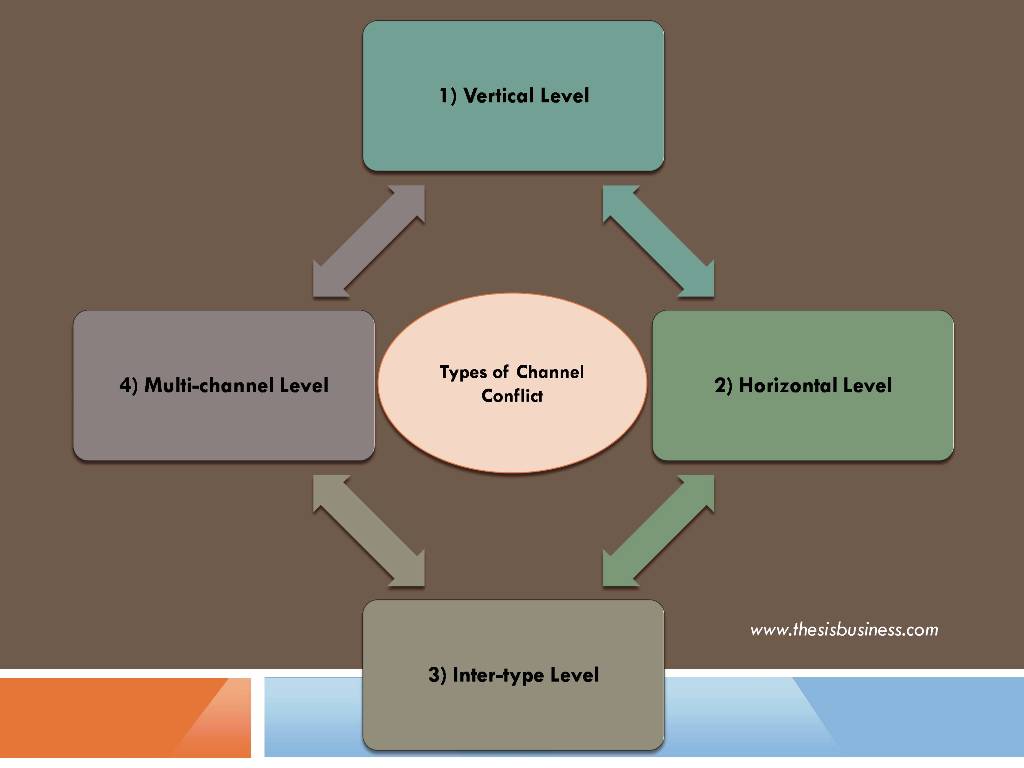A business has to deal with so many disputes, disagreements, conflict, discord, etc., that hampers the profitability, sales, and overall business environments. Management needs to keep a close look at all those issues to bring more business prospects. Channel conflict is one of the major issues that every company has to deal with in their business life cycle.
In this article, we will go through detailed information on channel conflict with meaning, types, causes, consequences, and how to avoid a channel conflict?
Table of Contents
What is Channel Conflict?
As the name itself denotes, it is a conflict, dispute, difference, or discord between various channel partners or stakeholders of a business. This conflict affects business badly and leads to decreased sales, profitability, market share, etc. It is not limited to any particular sector. Typically, manufacturing companies encounter such issues more as they need to create a supply chain covering various channels.
Types of channel conflict –
Based on the business flow and involvement of various channels, there are four types of channel conflict.

1) Vertical Level
As the name itself denotes, vertical level channels conflict in vertical ways. Here, a channel parent gets into a dispute or discord with someone from the lower level and vice versa. The conflict between dealers and retailers is an excellent example of this type.
2) Horizontal Level
When there is a conflict between the same levels of channels, this is called horizontal channel conflict. Different stockiest or wholesalers fighting to sell their products in particular demography are a prime example of this type. At the horizontal level, channels keep their interest above the company internet, and ultimately the organization has to suffer.
3) Inter-type Level
This type is primarily seen in FMCGs products supply chain. A small retailer working for long years transforms itself into a super or powerful retailer. In that case, those large retailers go out of their way to capture the market of other small retailers, which makes a challenging case for the organizations as there is a risk for disturbances in the properly settles supply chain.
When e-Commerce was new to India, this type of conflict was primarily seen. Many big retailers covered the large demography with online delivery, and the smaller retailers felt the losses.
4) Multi-channel Level
Post-COVID, most of the companies in the retail business have adopted a way of selling their products online. Products are being sold directly from their websites and other e-commerce sites, big retail stores, and small retail stores. When there is a conflict due to multiple channels, It is called multi-channel level conflict. Let’s say Amazon has started offering 50 percent discounts on all the clothes from Pantaloon. Here the parent company will be forced to follow the trend, leading to a dispute between Amazon and Pantaloon.
Causes of channel conflict
- In this diverse business environment, there is significant role ambiguity. Organizations choose the multi-channel arrangement without any specific framework or guidelines. Even if they have a framework, the big channels pressurize organizations for being lenient on their policies.
- The excellent rules of 80-20 or the Pareto Principle apply here with channel conflict. The rules state that a business gets 80 percent of its outputs from 20 percent of inputs. Despite getting the low output, companies need to keep those input sources.
- Manufacturers, wholesalers, retailers, suppliers, and other intermediaries do not share the same organizational objectives. Despite that, companies require a proper connection with all those channels, leading to different points of view and becoming the ultimate source of conflict.
- There is a large sum of reluctance in the various channels that prevent any revamp plan for conflict resolution. Often, channel leaders try to develop reliable ways for conflict management, but the same intermediates do not agree with the changes.
- The vast demographic distribution network has become the need of an hour. When it comes to management, it becomes a mammoth task for organizations. Before 30 or 40 years, most of the companies were operating locally, barring a few. But nowadays, companies like Gucci, Rolex, BMW, and other multinational companies have developed supply chain networks worldwide. Large demography, as well as no proper role assignment, makes a base of channel conflict.
Consequences of channel conflict
Bad Customer Service –
As channel partners get into discord with each other, their focus on serving the customer in the best manner gets diverted. Channels start focusing more on their benefits by selling more and more products rather than creating the brand image. This practice leads to increased resentment against the brand, and ultimately the company has to suffer.
Price War –
Manufacturing companies give various perks based on the sales figures besides offering some percentage of sales value to the channel partners. Due to conflict, different channels fight each other and reduce or increase prices based on their benefits rather than the company’s overall interest.
Let’s say two distributors working in the same demography start a price war by decreasing their margin on sales. There is a mandate to get 5 percent of the sales figure, but one will choose to let go 2 percent to the retailers for enticing to purchase with them.
Bleak Business Prospects –
Conflict of any sort is not beneficial for anyone. Even countries fighting each other forget to work on their core work that leads to poor development growth. Channel conflict deteriorates sales, and business prospects get bleak.
Bad-Reputations –
Marketing is not all about advertisement on various digital and other platforms. It also happens through word of mouth. When a channel partner gets dissatisfied due to conflict, it leads to negative publicity among people with whom the partner interact. It is also possible that the partner will exit from the supply chain and start selling the competitor’s products with more energy.
How to avoid channel conflict?
Channel conflict is the most crucial aspect to avoid for any company. There are many proactive ways to channel conflict prevention.
- Develop a transparent and well-documented compensation adjustment plan for every channel. You can also offer additional benefits to that channel working under the framework without going beyond or below.
- Adjust the price structure and ensure channel-specific discounts and fixed sources of earning for every channel.
- Based on your business size, avoid selling the products directly to the customers. It is pretty prevalent in FMCGs sectors. Hindustan Unilever is one of the biggest FMCG companies, but it does not manufacture products. Manufacturers get into touch with supply chain management companies and get their products delivered anywhere, anytime.
- Organize virtual or physical get together whenever possible for various channel partners. Get their feedback, and try to resolve any disputes between them at the early stage.
Wrapping Up –
As a business, you need to be vigilant towards channel conflict. Adopt a standard communication policy with them and ensure no or little resentment among any channel partner. It has also been seen that some channel conflicts are suitable for the company, but examples of this type are very few. Experts argue there is a thin line between channel competition and channel conflict. Keep an observant view and try to develop healthy competition between channels.
